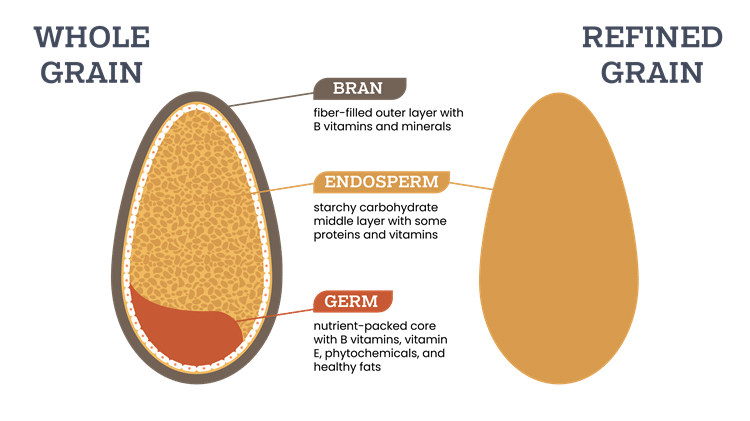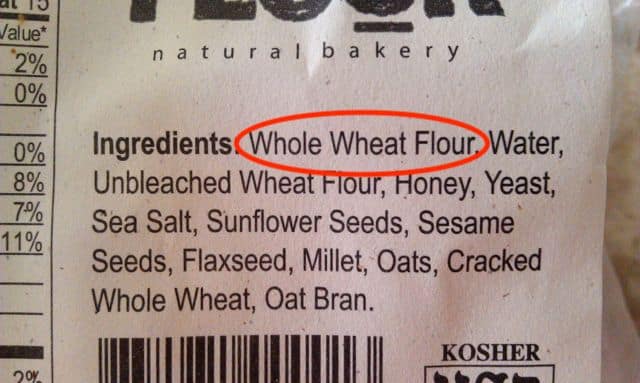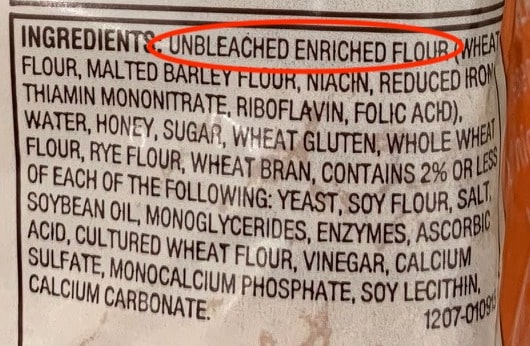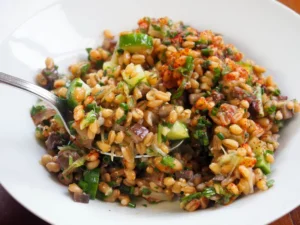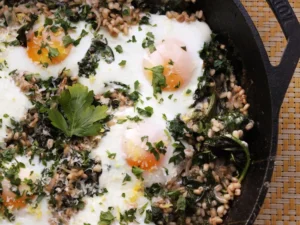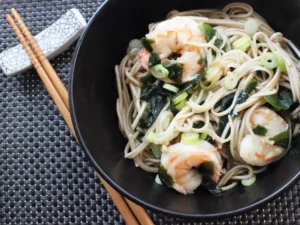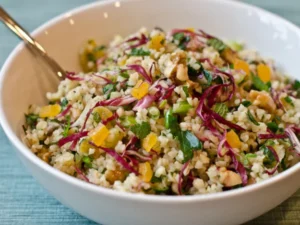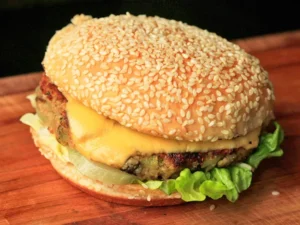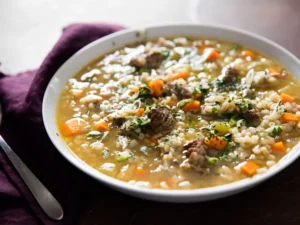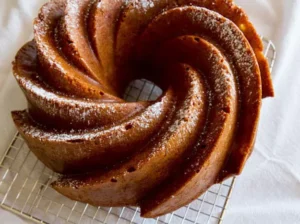Food and Nutrition Education Resources
What are Whole Grains?
By: Jaz Popa, 4/7/23
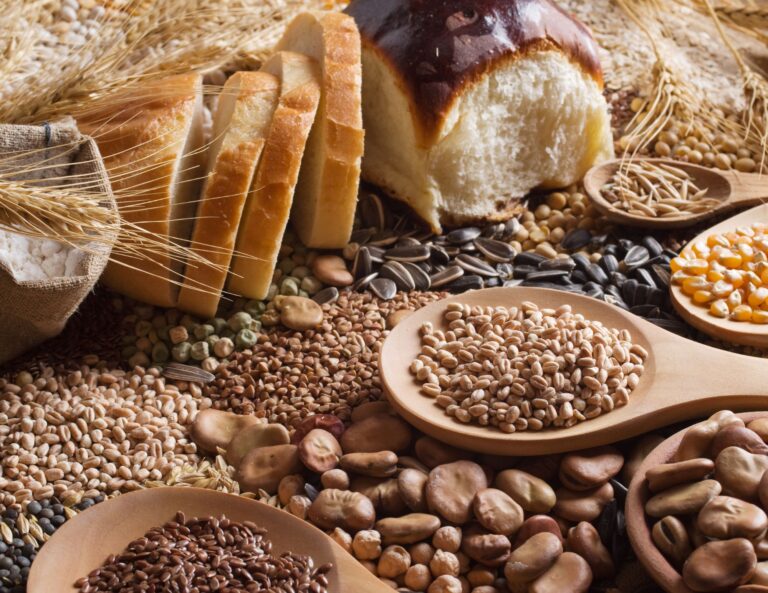
Grains are a delicious, necessary part of our diets that are the source of many important nutrients like complex carbohydrates, dietary fiber, B vitamins, iron, and more. Bread, pasta, cake, oatmeal, popcorn, bagels, tortillas, grits, and cereal are all delicious foods made from grains. But what are grains, really? Grains are small, edible dry seeds that grow on grass-like plants called cereals that include barley, buckwheat, bulgar, corn, farro, millet, oats, quinoa, rice, rye, and spelt. Eating whole grains can help reduce the risk of heart disease, support healthy digestion, and support a healthy pregnancy.
Whole Grains vs. Refined Grains vs. Enriched Grains
Grains can be divided into two categories: whole grains and refined grains. Whole grains contain the entire grain kernel. This means a whole grain includes the bran, germ, and endosperm. Whole-wheat flour, bulgur (cracked wheat), oatmeal, popcorn, and brown rice are all examples of whole grains. Refined grains, however, are milled, which is a process that removes the bran and germ and leaves only the carbohydrate-heavy endosperm. This gives grains a smoother texture and extends their shelf life, but it also removes dietary fiber, iron, and many B vitamins. White flour, corn grits, white bread, and white rice are some examples of refined grains.
Often in the US, refined grains will be listed as enriched, or sometimes fortified, grains. Enriched grains are refined grains that have had nutrients like vitamin B added back into them. Enriched grains restore nutrients lost during the milling process. Although this makes enriched grains more nutrient dense than non-enriched refined grains, they typically do not have fiber added back into them.
How to Find Whole Grains
Some food products are made from mixtures of whole grains and refined grains. Only foods that are made with 100% whole grains are considered a whole grain food and will be evident in the ingredients. To determine if a product is a whole grain product, the word “whole” or “100% whole” will be listed before any grain included in the product, such as whole wheat or whole rye. Typically, the first word listed in the ingredients list will be “whole”. Although the packaging may say “whole grain” on the front of the box, this does not mean it is 100% whole grain, so always be sure to check the ingredient list.
How to Enjoy Whole Grains
Whole grains can have a slightly different texture than refined grains, which can take some adjusting. One way to start incorporating whole grains into your diet is to start slowly and with familiar foods. Try replacing a refined grain that you already eat with its whole grain counterpart. You can even do half whole grain and half refined grain to start. For example, try using half white pasta and half whole wheat pasta in a dish or add oats into your meatloaf or batch of cookies. When it comes to cooking rice, brown rice takes significantly longer than white rice. So, if you want to do half and half with rice, keep that in mind. Bulgar is also a fabulous substitute for white rice. It does not have a nutty flavor like brown rice or quinoa. Bulgar has a mild flavor like white rice, a short cooking time like white rice, and a fluffy texture like couscous. Another way to slowly incorporate more whole grains into your diet is with popcorn. Popcorn is a whole grain that is a great replacement for refined grain snacks like pretzels or crackers.
Instead of… | Try… |
Flour tortillas | Corn tortillas |
White bread | Whole wheat bread |
White rice | Brown rice, bulgar, or quinoa |
Flour-based crackers | Popcorn |
Breadcrumbs | Crushed whole bran cereal |
Refined flour pasta | Whole grain pasta |
Baking with refined flour | Baking with part whole wheat flour |
To learn more about how many whole grains you should get in your diet, click the buttons below and consult your doctor.
How to Cook Different Grains
– Amaranth: 3 cups water to 1 cup amaranth. After bringing to a boil, cover with a lid and simmer for 30 minutes.
– Bulgar: 1 1/2 cups water to 1 cup bulgur. After bringing to a simmer, cover and cook over low heat until tender, about 12 minutes. Remove from heat; let stand, covered, 10 minutes.
– Hulled Barley: 3 cups water to 1 cup barley. After bringing to a boil, cover with a lid and reduce heat; simmer for 90 minutes.
– Farro: 4 cups water to 1 cup farro. After bringing to a boil, cover with a lid and simmer for 1 hour.
– Millet: 3 cups water to 1 cup millet. After bringing to a boil, cover with a lid and simmer for 25 minutes, then let stand for 10 minutes.
– Quinoa: 2 cups water 1 cup quinoa. Add water after rinsing quinoa and then toasting it in a dry pot; bring to a boil then cover with a lid and simmer for 20 minutes.
– Wheat Berries: 3 cups water to 1 cup wheat berries. After bringing to a boil, cover with a lid and simmer for 1 hour and 10 minutes.
– Wild Rice: 4 cups water to 1 cup rice. After bringing to a boil, cover with a lid and reduce heat; simmer 45-60 minutes or until rice splits open; drain excess water.
To incorporate more flavor into your grains, try boiling them in broth or with extra seasonings/aromatics.
For delicious, nutrient-dense whole-grain recipes, click the images and buttons below!
Extra Resources:
Foundation Health Partners: The Prime Numbers of eating whole grains
Healthline: 14 Healthy Whole-Grain Foods (Including Gluten-Free Options)
Healthline: What You Need to Know About Grains In Your Diet, According to a Dietitian
Mayo Clinic: Whole grains: Hearty options for a healthy diet

